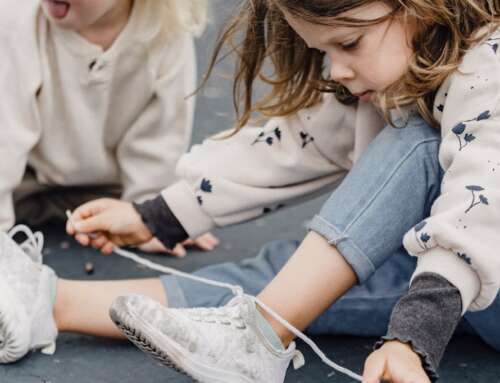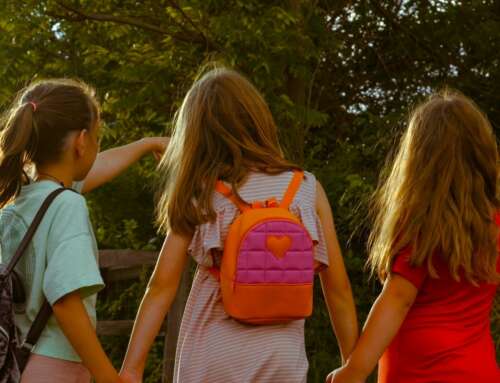How you think, effects how you feel which in turn leads how you behave. Developing a confident mindset where your thinking is constructive and hopeful, places you at an advantage in your childhood and right through to adulthood. Confident thinking and good social emotional literacy skills are crucial and provide the unwritten rules of getting along with others and preparing for success in learning and later on, in the workplace. Ignoring these life skills, can leave young people feeling unprepared for coping resiliently in the long term, with their social, family and work life.
Meta-analysis studies around the world have demonstrated that social-emotional competencies can be taught in schools and other settings to make a positive difference in young people’s lives. The long-term benefits include better academic outcomes, improved conduct, healthier relationships, and lower emotional distress. (Taylor et.al (2017).
Teaching the whole child by offering guidance and training around the skills that are necessary to learn and live harmoniously with others, is being recognised around the globe as essential for developing the competencies crucial, for the workplace and beyond.
A confident mindset takes steady, conscious, commitment, effort and practice. It’s also important to recognise that progress can’t happen in isolation. Leadership, educators and paediatric health professionals need adequate support, encouragement and training as well as a collaborative approach within a connected and committed group. The more supporters in the student environment aligned together, the better the outcomes will be. (Greenberg et al. (2003)

Here are 5 practical ways to start building confident thinking patterns in young people. A confident mindset is developed through ongoing guidance, conversations, encouragement and practice. Try and focus on progress, rather than perfection. Human beings take time to learn and grow and do this best when they are accepted for who they are and supported compassionately towards reaching their full potential.
-
Teach young people the ins and outs of healthy friendships through the lens of self-awareness and empathy. Lead them to find out who they really are (not who they think they should be or who others want them to be). Help them see how friendships thrive through common ground, open-mindedness, mutual respect and empathy. Bonds are strengthened further by understanding that differences are a natural part of human diversity and can be a positive aspect of friendship. They are by no means not a reason to not be friends with someone.
Ask them what belonging means to them and if they think belonging is a universal need. Ask them what loneliness and isolation means to them and if loneliness and isolation is disliked universally. Belonging is only possible when everyone is accepted for who they are (as long as their behaviour is not intentionally hurtful or harmful). Including and accepting others is an important step in creating a strong foundation for healthy friendships. Learning to focus on other people’s strengths and growing to appreciate each other for who you are is an important relationship mindset to develop.
You can try setting a goal for your family, class or paediatric health setting to become more understanding, accepting and non-judgemental of others. Making a deliberate effort to ignore other people’s physical appearance, academic, social or sporting status and other traditionally attractive attributes will help them cut to the core of the other person and seek connection in ways that are more likely to lead to long lasting, healthy and balanced relationships. Lead young people to see interactions for what they are; people uniting for connection and belonging, seeking to be heard, valued and understood. Teach children to bring their attention back to people’s insides, instead of outsides.
-
Teach emotional regulation skills, Let young people know emotions are contagious. Being responsible for the feelings you bring into a space is an important part of growing up and developing your emotional intelligence. Optimism as well as pessimism are contagious. (Achor (2015). A person’s facial expressions can act like an emotional mirror. If someone in front of you feels pain and you see that pain on their face or know they must be in pain, you too, will feel some of these emotions as well.

One way you can build and improve this skill is to teach young people to create a space between their feelings and their actions. Let them know that big feelings can lead to big reactions. The prefrontal cortex needs time to calm down before you can make sense of your feelings and act reasonably. Help them identify the themes of their discomfort. Help them visualise themselves in these situations handling their feelings confidently and using their emotional regulation tools. Encourage them to plan to pause, focus on their breathing and encourage themselves with confident self-talk. This is by no means easy (most adults will tell you they still struggle with this) but with time, practice and maturity you can improve your ability to regulate your feelings. Other important daily practices for being better positioned to handle your emotions include, movement, laughter, journaling, music, nature, art, hobbies, time with friends and family, kindness and gratitude.
-
Help them understand the value of confident self-talk (Self talk is that voice we all have in our head – an ongoing dialogue that more often than not, is tainted by scepticism). With guidance and conscious practice, this can be flipped around to be confident and hopeful. One way to help them understand self-talk, is by helping them get to know their inner critic and learn to respond to it with an inner champion. Most people have an inner critic that thinks from a place of scarcity, instead of abundance. The critic is a fault finder. Spend some time allowing children to have a ‘thought dump’ in a journal or through conversation with you. In this time, they think of all the things their inner critic says. Next, they create a new dialogue by their inner champion, a steady voice that speaks with kindness and encouragement, like you would offer a treasured friend. Teach them to go to the inner champion when the inner critic speaks to answer with a hopeful and helpful come back.
- Practice compassion. Studies have shown that being compassionate by noticing the good in others, valuing and appreciating them for who they are and doing what you can to lift them up, can reduce reactivity in the amygdala, making you calmer, more rational and reasonable. (Weng et al (2018). One way to do this is to set a goal as a family/ group to look for the best in others. When you find a fault, look at it with curiosity and acceptance. Have deliberate conversations where you notice the good in others. When you are talking about other people, focus on their positive qualities no matter how small. This optimism in and compassion for others builds a young person confidence in themselves and others. Lead young people to consider others and help when they can. Engage in random acts of kindness where everyone aims to do at least one kind thing for another person every day.
-
Teach problem solving and decision-making skills. To be confident, you need to know what to do when faced with an unexpected curve ball and you’re faced with a problem. You need to be able to do this without outsourcing a resolution to another person. If the people who care for you step in and resolve your problems, the message is that you can’t handle problems and need a ‘smarter’ expert to take over. This, is not to say a person should not engage in help seeking. Having the tools to problem solve age appropriate problems without relying on others strengthens your belief in yourself as a capable agent. Problem solving and decision making are crucial life skills for home, the workplace and beyond.

One way to teach problem solving and decision-making skills, is by having weekly family / class meetings, where you bring up the challenges of the week and brainstorm as a group about how you can resolve them. Once you have a few ideas, you agree on one to try for a set period of time. If it works, problem solved, if it doesn’t then you try the next idea. Ultimately, that’s all problem solving is; coming up with as many solutions and testing them out until one works. Young people learn new skills through familiarity and practice. Find a problem-solving framework that works for the young person and help them return to it every time a problem needs focused attention to resolve.
There are many other important pillars for a confident mindset. With every social emotional literacy skill up a young person’s sleeve, their happiness, resilience and confidence improves. Thinking with confidence is a learnt skill that doesn’t come naturally for many of us. If you’re looking for simple and practical ways to improve the social emotional literacy and confidence of your family or school, please read more about ‘The Confident Minds Curriculum’ by Madhavi Nawana Parker here: https://positivemindsaustralia.com.au/books/
References
Achor, Shawn. 2015. ‘The Science of a Smile.’ Success magazine, November 2 2018.
Achor, Shawn, 2018. ‘The Happiness Advantage: How a Positive Brain Fuels Success in Work and Life: New York: Currency.
Taylor, R.D., Oberle, J.A. Durlak, and R.P. Weissberg. 2017. ‘Promoting Positive Youth Development through school-based social emotional learning interventions: A meta-analysis of follw up effects.’ Child Development 88: 1156-1171
 Excerpted from Madhavi Nawana Parker’s book ‘The Confident Minds Curriculum: Creating a culture of personal growth and social awareness.’ Find out more about the curriculum here, or Madhavi’s organisation Positive Minds Australia here.
Excerpted from Madhavi Nawana Parker’s book ‘The Confident Minds Curriculum: Creating a culture of personal growth and social awareness.’ Find out more about the curriculum here, or Madhavi’s organisation Positive Minds Australia here.
Feature image source: pxfuel







Leave A Comment